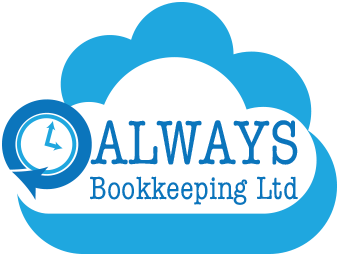It is extremely important that entrepreneurs understand not only how to properly enter information into the income statement says Edmonton bookkeeping, but by understanding the information in the income statement, entrepreneurs can understand the information in it. The income statement is one half of an interim financial statement that can help entrepreneurs make informed financial decisions in their business. By being able to understand all of the information in the income statement, can help entrepreneurs use the interim financial statements in their business to make the most informed decision that they can.
Understanding the various sections of the income statement is one of the most important parts of understanding the income state as a whole says Edmonton bookkeeping. Entrepreneurs should expect to have a revenue section, the cost of goods section as well as the expenses of the business.
Edmonton bookkeeping says that the revenue section of their income statement should be all of the different ways an entrepreneur ask money. It is usually a product or service that they sell. Typically, an entrepreneur will only have one main product or service that they sell but it is broken down into several categories. While there is no specific rule on how many categories this should be, typically, entrepreneurs should have three to stay organized, but not get too slowed down by trying to figure out all of the different categories. An example of this would be a grocery store. The only thing they sell is food, but they might decide to break it down into the three different categories of food purchased from a manufacturer, made in-store food, and meat products.
The next thing that an entrepreneur should understand their income statement is that they should have as many costs of goods sold accounts as they have product types. If they are a service industry that does not typically have expenses associated with that service, they may not have a cost of goods sold section at all. Examples of businesses that would not have a cost of goods sold account are accountants, lawyers, and bookkeepers. Businesses that would have a cost of goods sold include any kind of retailer, any kind of trades, and manufacturing facilities.
To completely account for the cost of goods sold, entrepreneurs should understand what the difference is between the cost of goods sold and expenses. The cost of goods sold is the specific costs that go into manufacturing or selling that product. For every type of income accounts they have, they should have a corresponding cost of goods section. This is so that entrepreneurs can keep track of what materials went into which products sold. The cost of goods should explain the entrepreneur’s income. Meanwhile, the expenses of the business are the costs that an entrepreneur has incurred simply by opening their doors. These the costs that an entrepreneur will have whether they sold anything in their business or not. Examples of these are rent, utilities, and office supplies. By understanding the differences between the cost of goods and expenses, as well as revenue that entrepreneurs are better prepared to correctly enter things into their income statement, as well as understand how to read them.
It is extremely important that entrepreneurs become very good at reading and deciphering information from their income statement says Edmonton bookkeeping. The reason for this is because the income statement makes up one half of the financial statement that entrepreneurs should always be reviewed before they make a financial decision in their business. Entrepreneurs must do this to make informed decisions about their business. Business owners should be reviewing their interim financial statements before any important financial decision, therefore understanding the income statement is an important half of that equation.
Once an entrepreneur understands the revenue and the cost of goods sold as well as the differences between the cost of goods and expenses, the next thing entrepreneur should learn says Edmonton bookkeeping, is how to account for the various expenses in their income statement. Because the expenses are everything that a business owner has incurred by opening their business, they are all broken down into specific categories. Understanding each of those categories and what information should go when it can help entrepreneurs stay organized.
The meals and entertainment category is particularly misunderstood says Edmonton bookkeeping. Many business owners believe that they can eat out every day and put this under their meals and entertainment. However, that is not accurate. For an entrepreneur to properly clean this information, they need to take into consideration the reason why they are incurring those meals and entertainment expenses. For example, a salesman who needs to travel away from home as a part of their job needs to eat meals in a restaurant, because they do not have the option of going home. If an entrepreneur works extremely late for overtime, they may be able to claim that, but they cannot just eat every meal in a restaurant and think it is going to count. This expense account is mostly for advertising purposes and is usually kept for entertaining clients and prospective clients.
Another expense account that is often misunderstood is the professional fee account says Edmonton bookkeeping. This is specifically only for professionals that need to pay their professional organization to continue operating as that profession. For example lawyers, accountants and doctors all need to pay professional fees.
There are also other expenses listed in the income statement, and this is where entrepreneurs can put expenses that do not fit into any other category. Most entrepreneurs put their salary into this account under management fees. They must keep their salary separate from the other employees.
By understanding all of the various expense categories, and what should be included in them, can help entrepreneurs keep their expenses very organized in their business, as well as completely understand the information in this report. By using this report alongside the balance sheet can help entrepreneurs make important financial decisions in their business.

